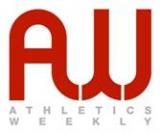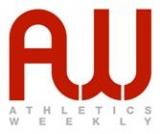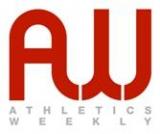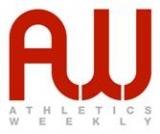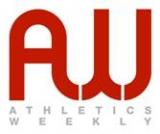Folders |
The high pullPublished by
The high pull is one of the most important Olympic lift variations and also one of the best posterior chain builder exercises, writes Antonio RobustelliThis exercise represents a useful movement for the development of the quality of the strength-speed curve (power) which includes starting strength, explosive strength and reactive strength (speed-strength). Starting strength refers to the force generated at the beginning of the muscle contraction, while explosive strength refers to the ability to develop the already applied force as quickly as possible and reactive strength refers to the ability to quickly switch from eccentric to concentric contraction. The high pull works the whole posterior chain (hamstrings, glutes and lower back), which is very important in athletics because of its contribution in increasing vertical jump, improving hip extension in sprinting, back extension in starts and postural integrity improvement. The movement is also great for athletes looking to increase overall muscle mass during general physical preparation in hypertrophy-specific training blocks. This is why the high pull, besides the posterior chain muscles, hits the mid-back, rhomboids, rear deltoid and trapezius muscles in a very effective way. The exercise is a partial movement derived from the weightlifting power clean exercise and it falls into the category of Olympic lifts variations. Its inclusion in the training programme can increase the technical proficiency of athletes thanks to the improvement in kinesthetic awareness and coordination. TechniqueThere are several variations of the high pull depending on the training purpose and the specificity of the discipline. In this article we will refer only to variations regarding the starting position and the grip width. The high pull is performed with a light weight in order to allow you to actively shrug and pull the elbows high after a full extension of the legs and hips. We can start from the blocks if we are interested in starting strength, whereas we can start from the hang position if our main purpose is to develop movements in which we have to quickly switch from eccentric to concentric. On the other hand we can use a wide grip (like a snatch-grip) if our purpose is a better activation or hypertrophy of the trapezius muscles. The lift starts with the barbell at mid-thigh (or from the blocks), with the shoulders slightly forward of the line of the bar and the neck in a neutral position. The shoulder blades are pulled together and the chest is as high as possible to allow for proper stability of the upper back, thus providing the optimal environment for the highest power output. At this point, start pulling as high as possible towards the neck using the posterior chain muscles and keeping the bar close to the body for all of the duration of the lift. Once the full extension of the legs and hips is reached, actively shrug with the trapezius and continue pulling the elbows high and to the sides to allow the upper arms to reach a horizontal position, parallel to the floor. It is important that throughout the entire movement the push into the floor through the balls of the feet remains constant and that the ankles remain fully extended until the bar reaches its highest point. It should be noted that the lift must reach at least the nipple line. Planning and programmingWHEN General preparatory phase for functional hypertrophy of the upper back, mid-back and rear deltoids HOW 3 sets of 6 reps @ 75-80% 1RM lifted explosively with 2min rest for functional hypertrophy COACHING TIPS Start at the hang position or from the blocks Antonio Robustelli is a strength and conditioning coach and sport performance consultant working with professional teams and athletes around the world and is an expert in the monitoring and management of recovery and physical stress ([email protected]) The post The high pull appeared first on Athletics Weekly. Read the full article at: www.athleticsweekly.com
|

